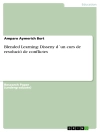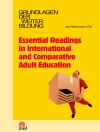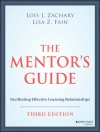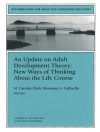This book discusses mass higher education development in East Asian countries by means of three main issues: the strategy for higher education development; the way professors and students in the region are experiencing the rapid developments; and the challenges imposed by mass higher education. These challenges include the quality of education as well as structural changes in the rapidly developing systems, funding sources for supporting mass higher education, and job markets for college graduates.
Part I discusses how the East Asian countries have accomplished or are in the process of accomplishing the rapid development of higher education. Japan, Korea, China, Taiwan, Malaysia, Singapore, and Hong Kong serve as case studies of mass higher education in the region. The case studies introduce and discuss national strategies to develop higher education, funding sources and mechanisms, and initiatives to assure quality of education in a period of rapid growth. Part II and Part III of the book focus on the phenomena of mass higher education in the region and the influence on academia. Mass higher education changes professors and students, who are different from those in elite higher education. Part III further discusses the challenges posed to Asian mass higher education.
The Comparative and International Education Society Higher Education (HESIG) has awarded Mass Higher Education Development in East Asia the Higher Education SIG Best Book Award 2015.
Tabella dei contenuti
Ch. 1. Mass Higher Education and Its Challenges for Rapidly Growing East Asian Higher Education (J.C. Shin, Seoul National University).- Part I. National Strategy for Mass Higher Education .- Ch. 2. Higher Education Development in Japan (F. Huang, Hiroshima University).- Ch. 3. Higher Education Development in Korea: Accomplishments and Challenges (J.C. Shin, Seoul National University).- Ch. 4. The Path toward Mass Higher Education in China (X. G. Shi, Peking University).- Ch. 5. Higher Education Development in Taiwan(P. Chou, National Chengchi University).- Ch. 6. Higher Education in Malaysia: National Strategies and Innovative Practices (M. Lee, University of Sains Malaysia).- Ch. 7. From Massification towards the Post-massification of Higher Education in Hong Kong (Jisun Jung and G. Postiglione, University of Hong Kong).- Part II. Academics and Students in Mass Higher Education .- Ch. 8. What Happened to Universal Education? In the West and in Asia (W. K. Cummings and Katrina Santner, George Washington University).- Ch. 9. Teaching and Curriculum Development in Mass and Universal Higher Education (F. Huang, Hiroshima University).- Ch. 10. Students in the Post-Massified Higher Education- What has changed and What has stayed the same in the Massification of Japanese higher education (K. Shima, Hiroshima University).- Ch. 11. Learning Ants: A Portrait of Chinese College Students in Mass Higher Education(Y. Luo, Tsinghua University).- Ch. 12. Students in Mass Higher Education: Effects of Student Engagement in Taiwan (D. Chang, Tamkang University).- Ch. 13. What Makes the Quality of Students’ Learning?: Focusing on the Articulation between High School and University (R. Yamada, Doshisha University).- Part III. Challenges Facing Mass Higher Education.- Ch.14. Who benefits from Taiwan’s Mass Higher Education? (P. Chou, National Chengchi University).- Ch. 15. Improving School to University Transitions during Mass Higher Education: A policy perspective (G. Postiglione, University of Hong Kong).- Ch. 16. Higher Education and the World of Work: The Perennial Controversial Debate (U. Teichler, Kassel University).- Ch. 17. The Employment of College Graduates: Changing Wages in Mass Higher Education (S. Chan and C. Yang, National Chung Cheng University).- Ch. 18. The Quality of Mass Higher Education in East Asia- Development and Challenges for Asian Quality Assurance Agencies in the Glonacal higher education (Angela Yung Chi Hou, Fu Jen Catholic University).- Ch. 19. Faculty Participation in University Decision Making and Management in Japan (A. Morozumi, University of Tokyo).- Ch. 20. The Effects of Massification on Higher Education for Teacher Education in Taiwan (C. M. Liang, Taitung University & C. Chang, Vanung University).- Conclusion.- Ch. 21. Conclusion: Lessons from Higher Education Development in East Asia (J.C. Shin, Seoul National University).
Circa l’autore
jsdhgfkjfdsh8943ldkjsflkdjgf












